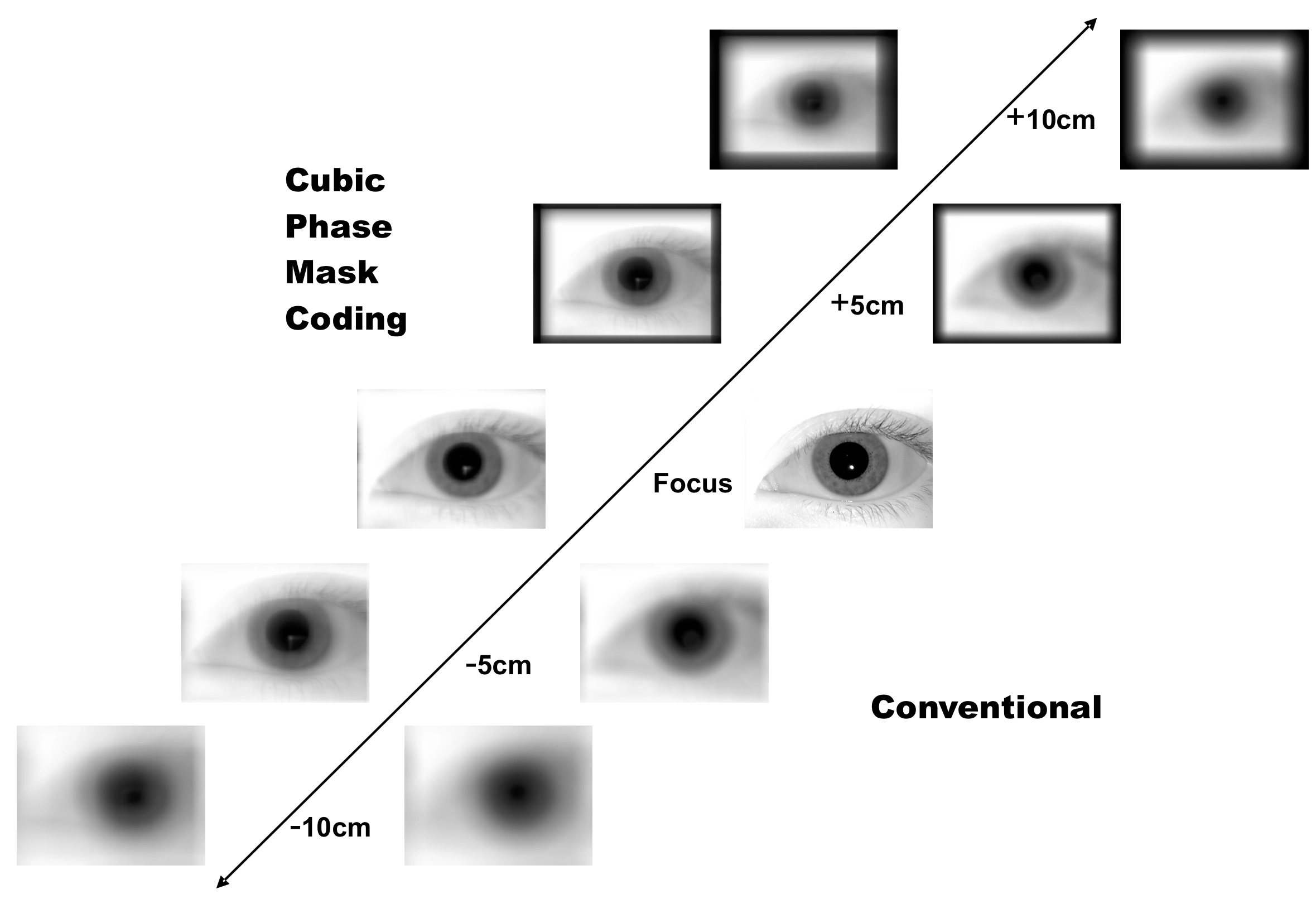Abstract
Iris recognition can offer high-accuracy person recognition, particularly when the acquired iris image is well-focused. However, some practical applications require that the iris recognition system perform well even when the eyes are not in the focal plane of the camera lens. Therefore, iris recognition using camera systems with a large depth of field is very desirable. One approach to achieve extended depth of field is to use a wavefront coding system as proposed by Dowski and Cathey which uses a cubic phase modulation mask whose effect is a linear operation. The conventional approach is to restore the iris images from the camera outputs and then apply iris recognition algorithms to the restored iris images. Some correlation filters are invariant to linear operations and should maintain their recognition performance even when the training and testing images are the unrestored (i.e., blurred due to wavefront coding) images produced by the extended depth of field imaging system. In this work we investigate the recognition performance of correlation filters and compare it with the popular iriscode method when the input images are unrestored images produced by the wavefront coding imaging system. We present results of simulations done with more than 1000 such unrestored wavefront coded iris images taken from the ICE database.
